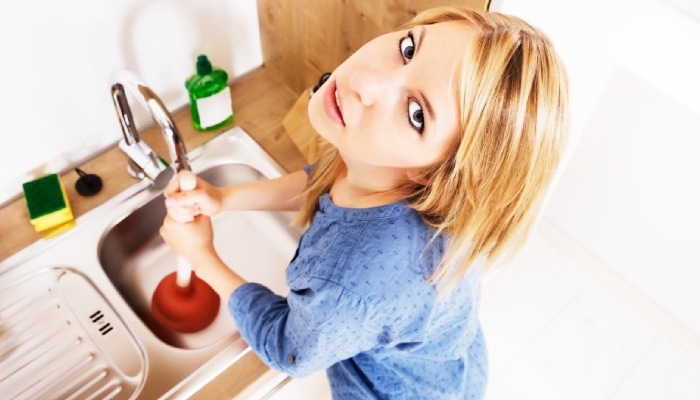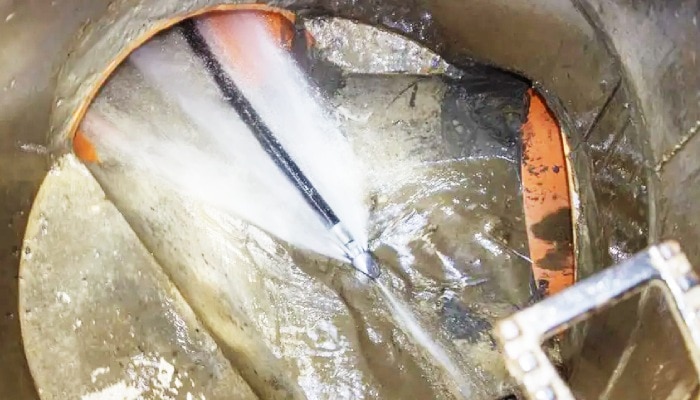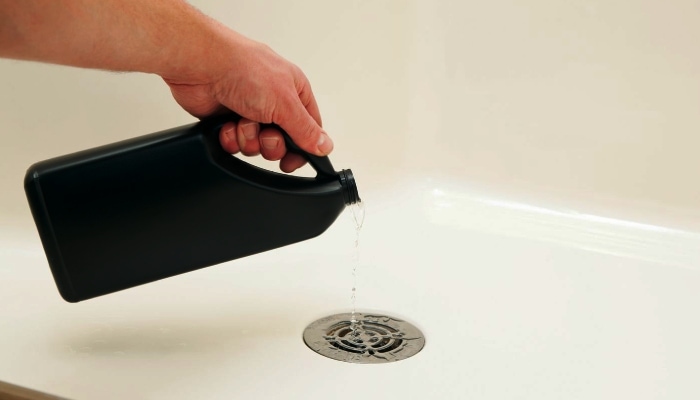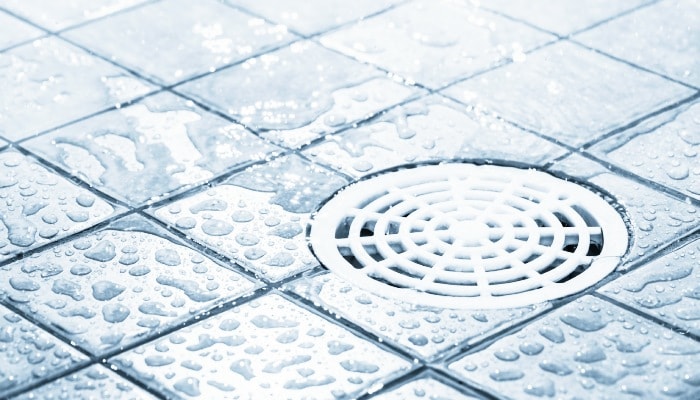In the realm of household maintenance, few issues are as universally frustrating and common as blocked drains. Whether it’s a kitchen sink that refuses to drain, a shower that leaves you standing in a puddle flush hot water, or a toilet that won’t flush properly, the inconvenience and potential for damage make finding effective solutions a priority for homeowners and professionals alike.
The battle against blockages is fought on two fronts: chemical uncloggers, including chemicals to unclog toilets, and mechanical methods. Each approach has its advocates and detractors, offering a range of solutions from quick fixes to preventative maintenance. This article aims to shed light on this debate by providing a comprehensive comparative analysis of chemical uncloggers versus mechanical methods.
By examining the effectiveness, safety, cost, and environmental impact of these methods, we endeavor to offer readers a well-rounded perspective that empowers them to make informed decisions best suited to their needs. As we navigate through the intricacies of each approach, we’ll explore how they work, their advantages and limitations, and the contexts in which one may be preferred over the other.
Whether you’re facing a minor annoyance with blocked drains or a plumbing nightmare, understanding the strengths and weaknesses of these solutions will equip you with the knowledge to choose the most effective, safe, and economical method for clearing drain blockages.
Understanding Drain Blockages

Drain blockages are a common household issue that can cause a significant amount of inconvenience and potential damage to plumbing systems. These blockages can occur in various locations within a home, including kitchen sinks, bathroom drains, and toilets. The nature of the blockage often depends on its location. For example, kitchen sinks frequently suffer from blockages due to the accumulation of food waste, grease, and soap residue, while bathroom and shower drains are more likely to be clogged by hair, soap scum, and personal care products.
Understanding the common causes of these blockages is crucial for both prevention and effective resolution. Organic material, such as food scraps in kitchen and bathroom sinks and, can build up over time, clogged drain, reducing water flow or stopping it altogether. Similarly, hair and soap scum can form a dense matrix that is difficult to dissolve or remove from clean drains without proper tools or chemicals. In bathrooms, toilet blockages often result from flushing inappropriate materials, such as sanitary products or even toys.
The key to managing these blockages lies in recognizing the early signs of stubborn blockages, such as slow draining water or gurgling sounds, which indicate a developing clog. Early intervention to clear blockages can prevent a complete blockage, saving time, effort, and potentially costly repairs. Moreover, understanding the type of blockage is essential for choosing the most effective removal method. While some clogs can be easily handled with a plunger or boiling hot water first, others may require more aggressive chemical treatments or professional mechanical removal techniques.
Effective solutions require a blend of knowledge, the right tools, and timely action. By familiarizing ourselves with the different types of drain blockages and their causes, we can better prepare to tackle these issues head-on, minimizing disruption to our daily routines and maintaining the integrity of our plumbing systems. The following sections will delve deeper into the specifics of chemical and mechanical methods, providing a detailed comparison to guide readers in choosing the most appropriate solution for their blockage problems.
Chemical Uncloggers: An Overview
When faced with a stubborn drain pipe blockage, many turn to chemical uncloggers as a first line of defense. These powerful solutions, including chemical drain cleaner, are designed to dissolve the materials causing the clog, offering a seemingly straightforward and effortless way to clear blocked drain pipes.
For those seeking a gentler alternative, a mixture of baking soda warm water and vinegar can also be used, leveraging a chemical reaction for clearing clogged drains without the harshness of commercial products. Chemical uncloggers come in various formulations, including caustic, oxidizing, and acidic types, each with its specific mechanism of action.
Caustic uncloggers work by generating heat and turning grease into a soap-like substance that is more soluble in water. These solutions are typically made from lye or sodium hydroxide. Oxidizing uncloggers, on the other hand, contain substances like bleach (sodium hypochlorite) or peroxides that react with the organic matter in the clog, breaking it down through an oxidation process. Acidic uncloggers are often considered the most potent and tough clogs around, using either sulfuric acid or hydrochloric acid to dissolve almost anything in their path, from hair and grease to some types of metal.
The advantages of chemical uncloggers are clear: they are readily available, easy to use, and can quickly dissolve many types of blockages without the need for physical labor. However, these benefits come with significant drawbacks. The chemicals in these products can be hazardous to health, causing burns, respiratory issues, or other injuries if not handled with appropriate care.
They can also have a detrimental impact on the environment, as residues can contaminate water sources and harm aquatic life. Furthermore, repeated use of harsh chemicals can damage plumbing fixtures and pipes, leading to corrosion and leaks over time.
Safety precautions are paramount when using chemical uncloggers or other drain cleaners. Users of chemical cleaner should always follow the manufacturer’s instructions, use protective gear like gloves and goggles, and ensure adequate ventilation.
Despite their effectiveness, these products are not suitable for all types of clogs or plumbing systems, such as those in older homes with fragile pipes or in septic systems where chemical imbalance can disrupt the biological breakdown process. In such cases, consulting a professional plumber may be the best course of action, ensuring that the clog is cleared safely and effectively without risking damage to the home’s plumbing system itself.
Mechanical Methods: An Overview

Mechanical methods of unclogging drains offer an alternative to chemical solutions, often favored cold water, for their effectiveness and minimal environmental impact. These methods involve physically using blocked drain pipes removing or breaking apart the blockage using tools such as plungers, plumber’s snakes (also known as drain augers), and hydro-jetting devices.
Plungers are the most commonly used mechanical tool, employing suction and pressure to dislodge and dissolve clogs. A correct seal around the drain opening and vigorous plunging can clear many simple blockages in toilets, sinks, and bathtubs. Plumber’s snakes, or drain augers, are flexible cables that can be fed into pipes to break apart or retrieve clogs, offering a more targeted approach for deeper or more stubborn obstructions. Hydro-jetting uses high-pressure water to blast through blockages, clearing pipes of not only the immediate clog but also any buildup lining the toilet paper drain snake pipe walls, making it an effective solution for severe and recurrent blockages.
The primary advantages of mechanical methods are their safety for both the user and the environment, their versatility in handling various types of clogs, and their ability to preserve the integrity of the plumbing and piping system. Unlike chemical uncloggers, mechanical methods do not involve hazardous substances, reducing health risks and environmental harm. They can also be more cost-effective in the long run, especially for recurring issues that would require multiple chemical treatments.
However, mechanical methods may require more physical effort and skill to use effectively. For plumbing snake for instance, improperly using a plumber’s snake could damage pipes, and hydro-jetting equipment is often expensive and requires professional operation. Despite these challenges, mechanical methods are highly regarded for their efficiency, especially in cases where other chemical cleaners and uncloggers fail or are unsuitable.
Comparative Analysis

The battle against drain blockages often boils down to a choice between chemical uncloggers and mechanical methods to unclog drains. Each approach has its strengths and weaknesses, influenced by factors such as the type of clog, environmental concerns, safety, cost, and the specific needs of the situation. This comparative analysis aims to provide a deeper understanding of these methods, helping homeowners and professionals make informed decisions on the most effective ways to unclog drains.
Whether dealing with a simple kitchen sink blockage or a more complex issue affecting the main sewer line, understanding the nuances between chemical and mechanical options is crucial for achieving a clear, functioning drainage system while minimizing potential harm to the environment and plumbing infrastructure.
Effectiveness: Chemical uncloggers, including chemical drain cleaners, are highly effective against organic blockages like hair, grease, and food particles, thanks to their ability to dissolve such materials. A common household tip for dealing with minor blockages, especially in the bathroom sink or shower drain, involves a simple routine of pouring boiling water followed by a mixture of baking soda and vinegar, creating a chemical reaction that helps clear the clog.
However, the effectiveness of chemical drain cleaners can be limited against solid objects or severe blockages where the chemical cannot reach the clog due to standing water. It’s also important to note that while flushing hot water down a drain can help prevent clogs, PVC pipes require caution as excessively hot water can damage them. Mechanical methods to unblock drains, particularly plumber’s snakes and hydro-jetting, excel in these scenarios, physically removing or breaking apart clogs of all types, including objects and built-up mineral deposits.
Safety and Environmental Impact: Chemical uncloggers pose significant safety risks, including burns, respiratory issues, and potential damage to pipes if used improperly. The environmental impact of chemical burns is also a concern, as these chemicals can leach into waterways, harming aquatic life. Conversely, mechanical methods are safer for both users and the environment, with no harmful chemicals involved. However, there is a risk of physical injury or pipe damage if tools are used incorrectly.
Cost Analysis: Initially, chemical uncloggers may seem more cost-effective, being cheaper than professional-grade mechanical tools. However, the need for repeated use, potential for pipe damage, and environmental cleanup costs can make them more expensive in the long run. Mechanical methods, while potentially requiring a higher upfront investment or professional help, often offer a more permanent solution to blockages, reducing long-term costs.
Situational Suitability: Chemical uncloggers are best suited for minor, organic clogs that have not caused complete blockages. They are convenient for quick fixes but may not be suitable for all plumbing systems, such as those with older pipes or septic systems. Mechanical methods for drain unblocking are versatile, capable of addressing a wide range of blockages in various plumbing systems. They are particularly effective for severe or deep clogs and can be used as part of regular maintenance to prevent blockages.
DIY Tips and Precautions

Whether opting for chemical uncloggers or mechanical methods to make sink drain and deal with other debris and drain blockages, there are several DIY tips and precautions that can help ensure safety and effectiveness of drain cleaners.
For Chemical Uncloggers:
- Read and Follow Instructions: Always read the product label carefully and follow the manufacturer’s instructions to avoid misuse, which can lead to injuries or damage.
- Wear Protective Gear: Use gloves and goggles to protect your skin and eyes from splashes.
- Ensure Ventilation: Work in a well-ventilated area to avoid inhaling fumes, which can be harmful to your respiratory system.
- Avoid Mixing Chemicals: Never mix different chemical uncloggers, as this can cause dangerous reactions, including the release of toxic gases.
- Dispose of Containers Properly: Follow local regulations for disposing of chemical containers to minimize environmental impact.
For Mechanical Methods:
- Choose the Right Tool: Select the appropriate tool for the type of clog and the size of the drain. A plunger is suitable for minor clogs, while a plumber’s snake or hydro-jetting may be needed for more severe blockages.
- Use Proper Technique: Incorrect use of mechanical tools can lead to injury or damage. For example, when using a plumber’s snake, feed the cable gently to avoid scratching the pipes.
- Regular Maintenance: Prevent blockages by using mechanical tools like drain snakes for regular maintenance, especially in prone areas like kitchen sinks and showers.
- Know Your Limits: If a blockage is too severe or if you’re unsure how to safely use a tool, it’s best to call a professional. Attempting to fix a complex problem without the proper knowledge can lead to further damage.
General Precautions:
- Identify the Cause: Understanding the cause of the blockage can help you choose the most effective and safe method for removal.
- Safety First: Always prioritize safety by wearing appropriate protective gear and working in a safe environment.
- Environmental Consideration: Opt for environmentally friendly solutions when possible, and dispose of waste and chemicals responsibly.
By considering these factors, homeowners and professionals can make informed decisions about the best methods to use for clearing drain blockages, ensuring effective results while minimizing risks to health, safety, and the environment.
The Future of Drain Cleaning

The future of drain cleaning is poised at the intersection of technological innovation, environmental sustainability, and enhanced safety measures. As consumers become increasingly eco-conscious and regulations around chemical use tighten, the commercial drain cleaner industry is moving towards greener, more efficient solutions. Advances in chemical formulations are expected to produce less toxic and more biodegradable uncloggers that are kind to both pipes and the planet. These new formulations aim to retain the effectiveness of traditional chemicals while mitigating their environmental impact and health risks.
On the mechanical front, technological advancements are leading to smarter, more precise tools. High-definition cameras, for example, can now be fed into sewer pipes to identify blockages with pinpoint accuracy, allowing for targeted interventions that minimize disruption and prevent unnecessary work. Moreover, innovations in hydro-jetting technology are making it more accessible and effective, offering a powerful, water-efficient method to clear clogged drains without harsh chemicals.
Emerging technologies, such as robotic and AI-driven systems, are beginning to make their way into the drain cleaning sector. These systems can navigate complex pipe networks, identifying and addressing blockages, cracks, and wear without human intervention. This not only improves the efficiency of drain cleaning but also reduces the potential for error and injury associated with manual drain cleaner methods.
Additionally, the emphasis on preventive measures and regular maintenance is growing. Smart home technology, including sensors that monitor flow rates and detect early signs of blockages, could become standard features in new constructions, helping homeowners address issues before they escalate into major problems.
Conclusion
The comparison between chemical uncloggers and mechanical methods for drain cleaning reveals a complex landscape of advantages, drawbacks, and situational considerations. While chemical solutions offer convenience and powerful action against certain types of clogs, their environmental and health impacts cannot be overlooked.
Mechanical methods, with their versatility and safety profile, present a robust alternative, particularly for severe or deep-seated blockages. As we look to the future, the evolution of drain cleaning technologies and practices promises enhanced efficiency, safety, and environmental sustainability.
Innovations in both chemical formulations and mechanical tools will likely provide more effective, eco-friendly ways to maintain clear and functional drainage systems. Ultimately, the choice between chemical and mechanical methods for drain cleaners will depend on a nuanced understanding of the specific situation, underscored by a growing commitment to sustainability and safety in drain maintenance practices.



